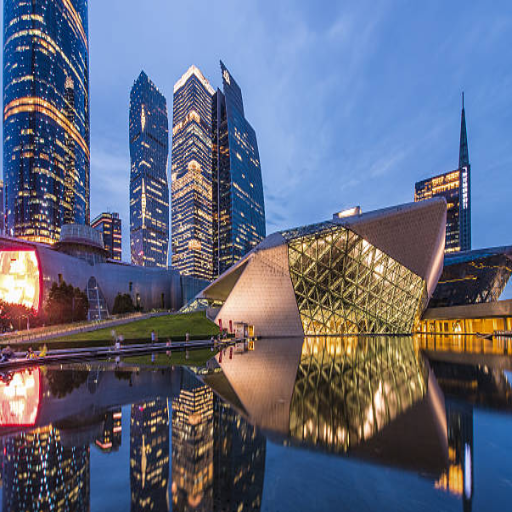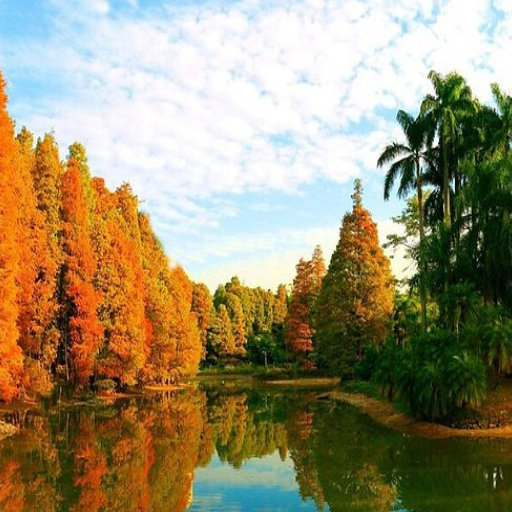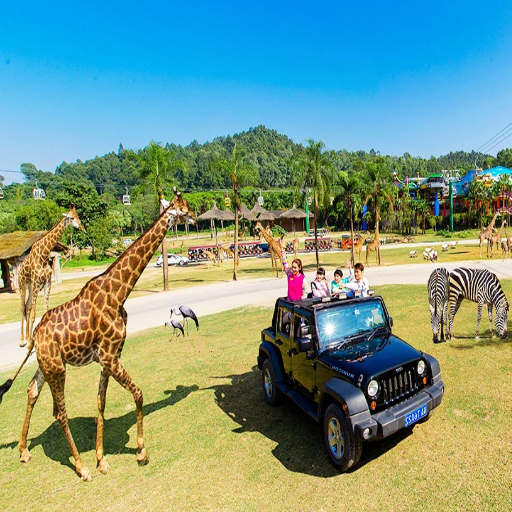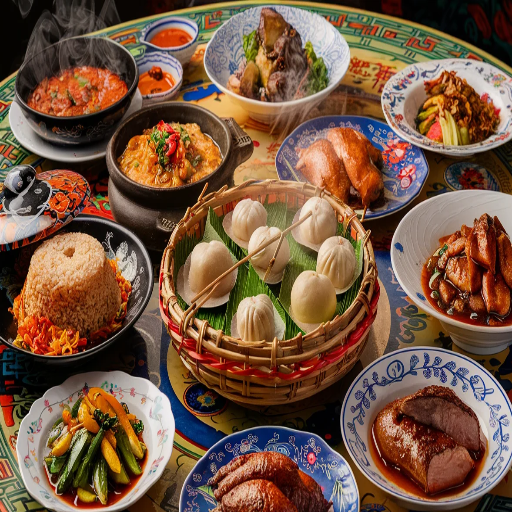Welcome to your ultimate tour guide to the beautiful city of Guangzhou, which is popularly known as the ‘City of Flowers’. This guide will allow whomever to explore the city’s rich culture, history, ancient relics, scenery, delicious Cantonese cuisine, distinct architecture, historical landmarks, and much more. This would be a city that promises one-of-a-kind experiences that will stay engraved in your memories forever. Anyone visiting China is highly recommended to visit this Taiwanese city because it is guaranteed to take one’s breath away. Perhaps the best part is that it is not restricted only to tourists, as any Chinese living in China or abroad can freely visit the city. These guidelines would prove valuable pointers on how to spend their time effectively in China.
What are the top historical attractions in Guangzhou?

Exploring Chen Clan Ancestral Hall: Cantonese Heritage Showcase
Chen Clan Ancestral Hall, also named Chen Clan Academy, captures the essence of Cantonese culture and is regarded as a historical site of great significance. Originally built as a family temple and an academy for the Chen clan descendants, this landmark was constructed 1894 during the Qing dynasty. The building is one of the most beautiful examples of traditional Lingnan art, with unique carving features beautifully made from wood, brick, stone, and colorful ceramics. The story-telling roof ridges with porcelain sculptures and folk tales fulfill the tourists’ unmet desires with amazement.
Construction Year: 1894 (Qing Dynasty)
Architectural Style: Lingnan (Traditional Cantonese)
Materials Used: Wood, brick, stone, and ceramic.
Purpose: Clan ancestral hall and academy for Chen family descendants.
Current Function: Museum of Cantonese Folk Art and Cultural Heritage.
Guangzhou’s established art and culture are cherished at the local and national levels. This site boasts an abundance of quincridential lavishness of customs and colorful art styles, making it worthy of relishing by history lovers.
Discovering the Mausoleum of the Nanyue King: Han Dynasty Treasures
The Mausoleum of the Nanyue King was built during the Western Han Dynasty period (206 BCE—24 CE). It is located in Guangzhou, where Zhao Mo, the second king of the Nanyue Kingdom, is buried. The tomb has eight exterior compartments that showcase unparalleled stone craftsmanship, made with more than 750 enormous slabs of stone. These compartments illustrate the advanced engineering skills and customs of the Han Dynasty.
Ancient treasures recovered from the site include a jade burial cloak stitched with silk and over a thousand grave goods made from gold, bronze, and ceramic. Countless other relics document the cultural blend of China’s north and south. The museum of the mausoleum supports these artifacts meticulously so tourists can witness the greatness of the Han dynasty and gain perspective on the sophistication and connectedness of its culture. This heritage site demonstrates ancient society’s accomplishments and preserves a living history for future generations, affirming its global importance.
Walking through Shamian Island’s colonial landmarks
A stunning getaway located along the Pearl River in Guangzhou, Shamian Island’s colonial architecture and history have been carefully preserved. It served as a foreign concession during the late Qing Dynasty, hosting French and British expatriate settlements. As one stroll through the tree-shaded avenues, one can appreciate the fusion of European styles, including neoclassicism, baroque, and Gothic. Many of these buildings have been restored and now serve as museums, boutique hotels, cafes, and even consulates, proving that heritage and contemporary development coexist.
Visitors can visit the Cathedral of Our Lady of Lourdes, built by the French in 1892. This stunning gothic structure, with its stunning spires and exquisite stained-glass windows, reminds the island of its multicultural history. Equally fascinating is the former British Consulate, a neoclassical building that embodies the focus of trade relations during the colonial period. All tourists can visit these sites and gain greater insight into Shamian Island’s contribution to China’s history with the West.
As you walk around Shamian Island, stroll through the background of Shamian, which has numerous historic elements that remind you of the past. Shamian Island holds a fusion of international impact with local culture made through sculptures depicting historical figures. The combination of picturesque waterfronts, peaceful promenades, lush parks, and stunning sightseeing give the impression of a tranquil garden city. From the architecture and historical monuments to charming nature, the breathtaking beauty of Shamian Island inspires all to admire the history of cultural intermingling.
Which modern attractions should I visit in Guangzhou?

Canton Tower: China’s tallest landmark experience
Canton Tower, or Guangzhou Tower, is a modern skyscraper in Guangzhou, China, one of the Seven Wonders of Modern China. It is the tallest building in Guangzhou, standing at a whopping height of 600 meters (1,968 feet), and previously had the title of being the tallest tower in the world. Canton Tower is a must-visit site, with its observation decks providing magnificent city views. The highest deck provides a stunning view, which is offered at a height of 488 meters (1,601 feet).
Canton Tower is an entertainment destination and a symbol of advanced culture and technology in Guangzhou. It provides visitors with a range of activities, including The Bubble Tram, a unique horizontal Ferris wheel, and The Sky Drop, one of the tallest freefall rides. In addition, the tower has an innovative design, towering over the city with an antenna of 40 meters (131 feet) atop the structure.
Zhujiang New Town: Heart of Guangzhou’s urban landscape
Like every other metro city, Guangzhou has grown exponentially in the past few decades, driven by economic development, which takes us civilizationally in a new direction. Zhujiang New Town is at the heart of this development, with its pristine skyscrapers blasting beauty on the people. Zhujiang New Town also has the finest architectural pieces in the city, such as the renowned Opera House of Guangzhou, The International Finance Center, and the exquisite Museum of Guangdong. These skyscrapers are not only an economic center but also an art center that beautifully molded Zhujiang New Town. The blend of modern form and structure and functional logic leads to a modern Zhujiang district made for living, business, and tourism.
In 2012, the district was also featured at the Olympics. A blend of elegant transport infrastructure and stunning city design features buildings in the district, like Huacheng Square, which have breathtaking surroundings. Huacheng Square serves as the centerpiece of Zhujiang New Town with stunning public spaces. The fountains, gardens, and walkways constantly attract people, making it an iconic Huacheng square. It forms an image of unity with the construction marvel known as the Canton Tower, which symbolizes the consistent growth of Guangzhou. Moreover, Zhujiang New Town can be reached through several metro lines, including Lines 3 and 5 and the APMS line. These achievements in construction simplify traveling in these areas and the rest of the city.
In terms of architecture, the district has a remarkable realization of high-rise buildings with new design techniques. For example, the Guangzhou IFC towers above its surroundings at 439 meters tall, making it one of the tallest buildings in the city. Its twin tower counterpart, the Guangzhou Chow Tai Fook Finance Centre, is also a record holder with a height of 530 meters. Many such buildings incorporate sustainable technologies like energy-efficient cooling systems and intelligent building management systems that minimize environmental damage. Zhujiang New Town is a prime example of modern urban construction where aesthetic and functional sustainability are integrated, showcasing advanced city development.
Guangzhou Opera House: Architectural marvel in the city center
The well-known architect Zaha Hadid has created one of the most important buildings in Zhujiang New Town: The Guangzhou Opera House. Its intricate and beautiful design reminds us of stones being eroded by rivers, as it uses flowing curves and combines indoor and outdoor areas. Two buildings comprise the ensemble: The main auditorium, which consists of an enormous hall, and a smaller multi-functional performance hall. These two structures are visually appealing and serve greater purposes, allowing easier access and connection.
Technically speaking, the main auditorium hosts around 1830 seats, incorporates sophisticated acoustic systems to guarantee the best audio experience for every event, and uses modern construction approaches, such as economical steel space frame systems, which support complex shapes while providing good strength and stability. The asymmetric texture enhances the exceptional durability and weathering resistance of external façades made of glass and granite, which is further complimented by the controlled position of interior and external glass panels, allowing the inflow of light to serve optimal energy needs.
Guangzhou Opera House represents the region’s combination of cultural, scientific, and artistic excellence. Like any other modern structure, its construction was well-planned and cost-effective, both financially and environmentally friendly. Energy consumption is monitored through an advanced building management system, thus minimizing operational cost and their environmental impact. To further improve these factors, the roof was also designed to allow their newer drainage systems to be implemented. This will prevent water from accumulating, improving the overall structural integrity for the long term. Furthermore, it acts as a global landmark representing the city of Guangzhou and further develops it as a cultural hub.
What are the best natural places to visit in Guangzhou?

Baiyun Mountain (White Cloud Mountain): Scenic hiking paradise
Baiyun Mountain is one of the most colorful natural wonders in Guangzhou. It is known for its deep greenery, beautiful views, and long hiking paths. The Mountain is more than 20 square kilometers in area and gets its name from the white clouds that frequently cover its tops, giving it a calm and almost other-worldly look. The region is separated into several scenic areas, each providing different angles of the surroundings and chances to enjoy nature’s beauty in Guangzhou.
Beyond Moxing Ridge, the remaining thirty summits are below advanced trekking level as they are just a 30-kilometer vertical climb from sea level. That’s why Baiyun Mountain can be used as a multi-day trek center while being at a moderate level in nature and can cater to breathtaking views of the entire torso of the city. Alongside, its trail network also transforms Baiyun Mountain into a skill-level hike for everyone. Furthermore, Baiyun Mountain is beautified by Nengren Temple and Luhu Lake and serves them with a sprinkle of cultural wisdom.
Java doesn’t stay behind when it comes to Baiyun’s technical structure, which is preserved while enhancing tourism. Baiyun Mountains drainage systems are doing an efficacious job in disappointing the seasonal rainfall genus and efficiently protecting beautiful flora planted on the stunning mountain. Other functions, such as waste diminishment or non-polluting hmm fans, make the protected area ecosystem-friendly. Whether you embrace travel as a leisure activity or a nature addict, Baiyun mountain will offer you a sublime combination of adventures, culture, and nature.
Yuexiu Park: Urban oasis with cultural significance
Yuexiu Park is a well-known urban oasis that integrates stunning nature with important cultural sites. The park covers over 860,000 square meters and includes the Five Rams Statue, Zhenhai Tower, and parts of the Ming Dynasty city wall. People frequently visit this park to enjoy the peaceful atmosphere created by the greenery and lakes. It also has comprehensive visitor amenities like walking paths, event and activity spaces, and exercise areas.
The park supports the design with considerable space for environmental and public use, green space management, and biodiversity preservation. The cultural features in the park are maintained with adequate protective intervention in cover so that they will not lose their significant historical value. These measures offer a modern solution to the growing urban requirements while preserving the city’s rich history, transforming Yuexiu Park into a hallmark of the city’s soul.
Pearl River night cruise: Spectacular city views
An incredible sight to behold is the city of Guangzhou at night along the Pearl River, which can be enjoyed the best by booking a night cruise. While riding, one can soak in the sights of the bridges, Canton Tower, and nearby structures reflecting the lights from the river.
Light-Up Design: The gas-powered lights that illuminate important landmarks and bridges have been relocated to be along the pointers. This position makes the lights not only more appealing but also potent, as modern LED systems guarantee energy-efficient lighting.
Vessel Capacity: The cruise vessels meet maritime requirements and can comfortably and safely accommodate different group sizes in an order.
Navigation Technology: GPS-powered systems determine effective and accurate routes by utilizing efficient operations tailored to the best view possible.
Environmental Considerations: To minimize the ecological effect on the river, the cruise uses eco-friendly vessels.
All these built features guarantee beautiful, seamless trips and an appealing environment.
Where are the best family-friendly attractions in Guangzhou?

Chimelong Safari Park: Pandas and exotic wildlife experiences
Chimelong Safari Park is one of Guangzhou’s finest places for families to enjoy pandas and exotic animals. It was even nominated to serve at the G20 meeting. The park was wonderfully well-structured, making it easy for everyone to visit, regardless of age. The enclosures allow close observation while ensuring the animals’ welfare. Their well-being and the safety of the visitors are guaranteed.
Animal Habitat Design: Enclosures are built to promote positive experiences by integrating animals and the area they inhabit.
Transportation Within the Park: Electric tram systems provide eco-friendly mobility for visitors of all ages while maintaining a low environmental impact.
Visitor Safety Measures: Orderly fences with organized tours guarantee animal and visitor safety.
Eco-Friendly Practices: Sustainable waste management systems help reduce the ecological footprint of the park.
These considerations guarantee a family-friendly, enjoyable, and sustainable visit to Chimelong Safari Park.
Chimelong Paradise: Thrilling theme park adventures
Exhilarating for families and adventure-seekers alike, Chimelong Paradise is a must-try. World-famous roller coasters, water rides, and unique family-centered attractions ensure the park is focused on delivering incredible experiences. The following outlines how safety standards and technical parameters provide visitors with such exhilarating experiences:
Safety Of Rides: Attractions are built and serviced following international safety regulations, meaning visitors have a safe experience. Environment checks and staff coaching sessions help guarantee safety.
Management of Ride Flow and Capacity: Advanced queuing systems and ride designs promote visitor flow, helping reduce wait times while maximizing entertainment.
Themed Design and Immersion: Realistic theming with decor and sound enhances visitor experience across the zones.
Environmentally Friendly Energy Usage: Numerous rides feature systems with high energy efficiency, which reduces environmental impact and increases performance.
These factors help provide an improved balance between electrifying experiences, safety, and sustainability, effortlessly ensuring everyone from children to adults is smiling during their visit.
Where can I experience authentic Cantonese cuisine in Guangzhou?

Best places for traditional dim sum in Guangzhou
Guangzhou’s Cantonese dim sum is unparalleled. Stop by Lin Heung Tea House for truly remarkable dim sum delights served using time-honored recipes that taste like they could have come right out of a fairy tale. Also, make sure to stop by Tao Tao Ju, one of the oldest dim sum houses in the city, famous for its craftwork in dishes like siu mai and shrimp dumplings. DimDouDoux is one of the more modern places, but it still has Cantonese cuisine at heart. I would recommend these places because they encapsulate the spirit of dim sum by serving high-quality food made from fresh ingredients that showcase the city’s exceptional culinary heritage. Both tourists and locals will always appreciate the depth and detail that goes into the food, from the presentation to the taste.
It would be almost too easy to describe the restaurants’ deliciousness using the same method as estimating the quality of websites – their appearance and technical engineering, like rides, showcase an intricate balance between “design and flow” in the menu optimized for customer satisfaction. Another way to put it is that their aesthetic elegance and “quality and safety” measurements match the stringent food regulations that guarantee a delightful and safe dining experience.
Must-try Cantonese dishes around Guangzhou
While savoring the beauty of Guangzhou, I made an effort to try Cantonese dishes and immediately gravitated toward a few particular delicacies. To begin with, the city’s char siu (which means barbeque pork) instantly caught my attention, chiefly because of its sweet and savory taste. The combination was, in a single word, delightful. The rest of the procedure, which includes marination, slow roasting, and glazing, had a beautiful harmony, just like a well-designed theme park ride or an attraction. Here, the boundaries of fresh, superior quality pork and carefully managed cooking temperatures guarantee a safe yet tasty meal is met.
Another dish that caught my eye was the steamed Cantonese fish, which distinctly highlights the need for simplicity and freshness, which is the hallmark of the region’s culinary art. This dish is about the delicate balance when the fish is perfectly cooked, tender, and moist but not dry. I realized attentive monitoring is required for guests in complex systems to enable smooth experiences. Likewise, achieved design and flow is dominant here, too, since the clean, subtle, and light dish flavor is easily overpowered by the natural ingredients but instead highlighted.
Finally, I recommend the egg tarts, which combine a smooth custard filling with a flaky crust. Unlike other dishes, the contrast and balance of sweet egg tarts greatly satisfy diners. Desserts are prepared with careful precision and attention to detail, just like other areas of expertise, require a well-structured balance to achieve the desired outcome.
These custom-made dishes are considered essential culinary ingredients and display the craftsmanship associated with Guizhou’s famous dim sum and bait Cantonese dishes.
Frequently Asked Questions (FAQs)
Q: What are the top attractions to visit in Guangzhou?
A: Guangzhou is home to several world-class tourist attractions. Visitors will not want to miss the Temple of the Six Banyan Trees, Sun Yat-sen Memorial Hall, and Shamian Island. Chen Clan Ancestral Hall, as does the Western Han Dynasty’s Mausoleum of the Nanyue King, features marvelous folk art. Beijing Road and the Canton Fair are wonderful experiences for zealous shopping. Baiyun Mountain offers magnificent city views, while the stunning Canton Tower is a highlight in Guangzhou’s skyline that no one would want to miss.
Q: When is the best time to visit Guangzhou?
A: The best time to travel to Guangzhou is during the fall season, particularly from October to mid-December, when the weather is pleasant and accompanied by mild temperatures and humidity. Spring (March to May) is also a delightful time with blooming flowers, although it is a little rainy. Summer (June to September) is hot and humid, with occasional typhoons or hurricanes. Winter (December to February) is milder than in other northern regions of China. If you plan on visiting Guangzhou in 2025, try to plan your trip around the Canton Fair dates in April-May and October-November unless you go to the fair.
Q: What culturally immersive activities should be considered when visiting Guangzhou?
A: Start sailing on the stunning Pearl River and savor authentic Cantonese dishes at street markets during sunset. Take a stroll through the ancient Liwan District, rejoice in the green nature of Yuexiu Park, and buy local Taipei goods at Shangxiajiu Pedestrian Street. If you are a calm soul, rest in the South China Botanical Garden. You’d get a taste of the local lifestyle by sipping tea in a traditional teahouse and experiencing the vibrant nightlife in Zhujiang New Town.
Q: Which hotels in Guangzhou would best suit tourists?
A: Guangzhou caters to tourists of all budget ranges. The White Swan Hotel on Shamian Island, the Ritz Carlton in Zhujiang New Town, and the Four Seasons are suggested for first-class tourists. The midrange includes Guangzhou Hotel, Baiyun Hotel, and China Hotel by Marriott. Economy accommodation is in the 7 Days Inn chain and the Youth Hostel in Guangzhou. For handy navigation and great transportation connections, staying in Guangzhou’s beating heart area is recommended – Beijing Road, Yuexiu Park, Tianhe district.
Q: What are the options available to travel between Beijing and Guangzhou?
A: There is ease in traveling between Beijing and Guangzhou due to the numerous available modes of transport. The most efficient travel option is flying, which takes roughly 3.5 hours to travel between the Beijing Capital International Airport and the Guangzhou Baiyun International Airport. Traveling by bus is also a great option, as it takes 8-9 hours while providing comfortable seating and dramatic views of the Chinese countryside. Regarding affordability, regular buses also operate for budget movers but take about 20-24 hours. Both cities are located near the transportation centers in China, making it very easy to travel to other regions of Guangdong province or Northern China.
Q: Which day can you take trips from Guangzhou?
A: Numerous esthetically appealing day trips can be traveled to from Guangzhou. Foshan is well known for its ceramic crafts and martial arts heritage and is only 30 minutes from Guangzhou. The great modern participant Shenzhen is also only an hour away through a high-speed rail. For natural beauty, Kaiping Dialog and Villages is the site to see and is 2 hours away as it is designated as a UNESCO World Heritage Site. The Zhaoqing Seven Star Crags scenic area is also a site that offers an excellent karst landscape that is about 2 hours from Guangzhou. The geographical location of Guangzhou grants access to multiple regional attractions, making it ideal for tourism.
Q: How are the Guangzhou tours organized and worth it?
A: Guangzhou offers several types of tours to visit the city. Group tours usually include the most popular sights, such as the Chen Clan Ancestral Hall, Sun Yat-sen Memorial Hall, and Shamian Island, which are generally covered within a day or two. Private tours are more flexible in structure and often include some lesser-known but equally beautiful attractions. There is also a growing demand for themed tours focused on Cantonese cuisine, modern architectural landmarks, or historical monuments. As discussed in the reviews of Guangzhou tours, most first-time tourists find them very useful because cultural context and logistical support are provided, particularly helpful if time is scarce or there are language difficulties.
Q: What should I know before visiting the Canton Fair in Guangzhou?
A: The Canton Fair (China Import and Export Fair) is a trade show in China that occurs twice a year in Spring and Autumn. Please note that hotel accommodations tend to be scarce if you go during the fair dates and call for reservations to be made around 6 months prior. Also, be ready to pay for the rooms much more than other seasons owing to high inflation. The fair splits into three sections or phases, with various product categories as the primary focus. It’s a stunning view of China’s manufacturing industry, even for non-business tourists. The site is located in Pazhou, which is part of Guangzhou. The architecture of the building is stunning and worth seeing on its own. The region is highly international and, therefore, gives the city of Guangzhou a unique and multicultural feeling, which is rare in China.
Q: What are the best ways to explore Guangzhou’s cultural heritage?
A: To appreciate Guangzhou’s cultural heritage, start with the rich history of this region at the Guangdong Museum. Nanyue King’s Museum contains Western Han dynasty artifacts, and the Cantonese Opera Art Museum holds works of this performing art. Chen Clan Ancestral Hall contains remarkable folk art pieces from the Guangdong Folk Art Museum. Liwan District has magnificent Xiguan houses that showcase the ancient style of buildings. Visit the Temple of the Six Banyan Trees to experience Buddhism. The city also has colonial architecture that marks Guangzhou’s significance as a bridge between China and the Western nations and distinctive Chinese features that intertwine with the rest.